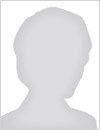Proceedings Article | 30 May 1995

KEYWORDS: Mirrors, Space telescopes, Telescopes, Sensors, Stars, Cameras, Hubble Space Telescope, Galactic astronomy, Photography, Ultraviolet radiation
The Hubble Space Telescope was launched into orbit in Apri I 1990. Almost fifteen years of planning, construction, assembly, and testing hd passed prior to the I iftoff from Cape Canaveral, Florida. The Hubble Space Telescone is an astronomical cbserva— tory orbiting the Earth 380 mi es above its surface. The goals of this cbservatory are to understand origin of the universe, laws of physics gcvrnir.q the universe, and birth of stars and planets, and advent of life. After images were sent back from space, the 2.4 meter primary mirror was found to have a serious problem of spherical aberration caused by improper grinding. The imperfection caused a blurred image of stars' light instead of a sharp point. Other problems were encountered with the solar arrays, guidance and telerr:etry systems, and the performance of auxi I iary equipment. The problems and planning for repair of the telescope took many months after determi— nation of the caus€ of the fuzzy images. A combination of mirrors was eventually decided upon to refocus the images onto the various instruments. The servicing mis— sion began on Dec. 2, 1993 with seven astronauts on the Space Shuttle Endeavor. The mission took eleven days wiTh six to eight hour work periods, replacing the malfunc— tioning equipment. There are many earthbound observatories trying to do some of the tasks assigned to the Hubule Space Telescope, but none have the advantages of observa— tion without atmospheric interference. The paper describes the observatory, its mis— sions, detai Is of equipment, data acquisition, transmission and reduction, problems of manufacture, repair mission, and postmission performarc;.


